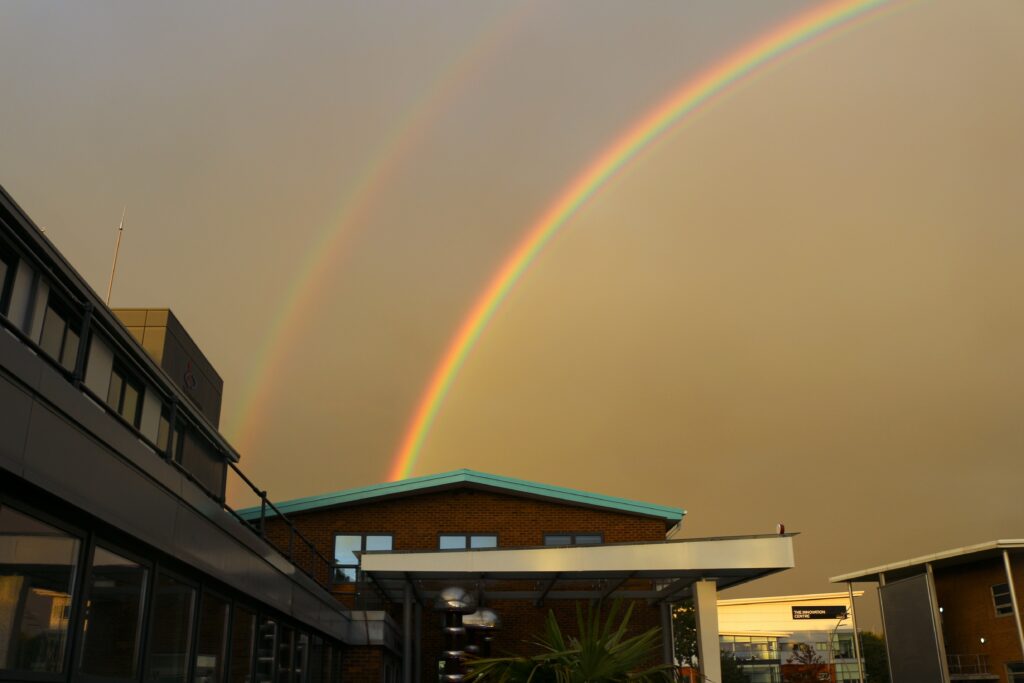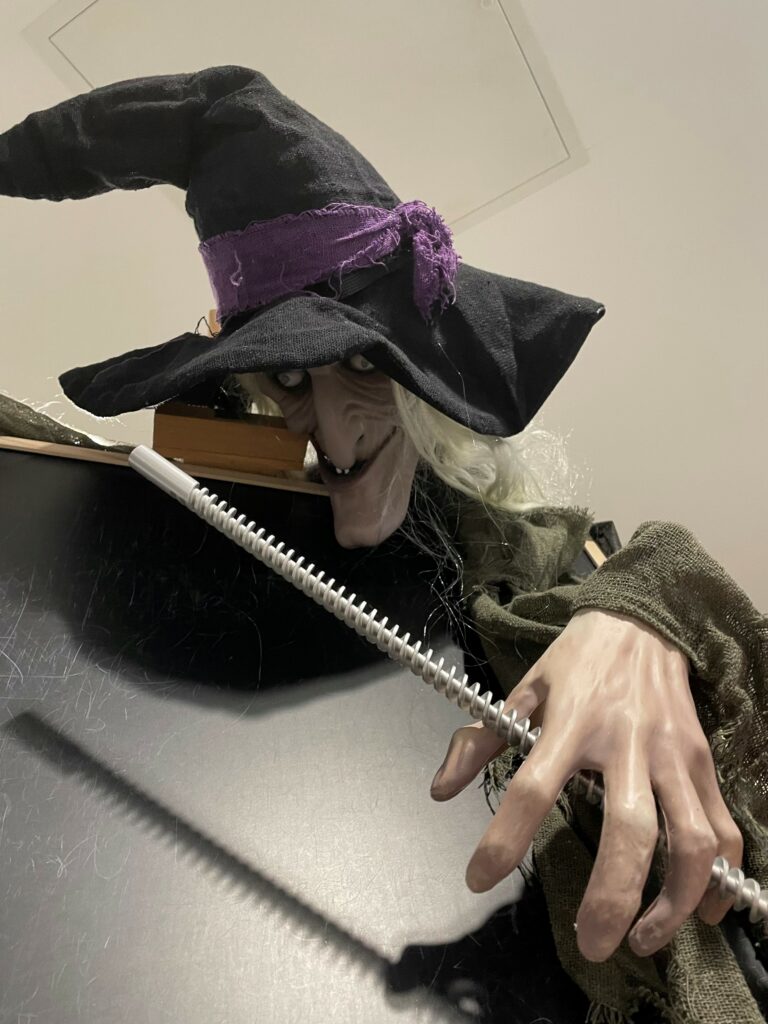Eerie light manifests in various hues. Most people have seen a rainbow and you may know that rainbows are created when a raindrop splits light up into all the colours it is made from (so white light is just the whole rainbow of colours mixed together). This spectrum of light doesn’t start at red and end at violet though, there are lots of other colours which come before red (Radio waves, Microwaves, Infra-red (heat)) and lots which come after violet (ultra-violet, X-rays and Gamma rays).

We can look at objects with different colours (types) of light and we see things differently according to what we use. So you probably know that using visible light you cannot see inside yourself, but if we use X-rays we can see our bones and other creepy things inside our body. You might have seen objects imaged using an infra-red camera before. These cameras are picking up heat (which is a type of light) so some things are see through in infra-red (such as clouds of dust). Other things, such as glass, are not see through in infra-red (because the heat mainly reflects off the glass).
Particle accelerators can make lots of types of light and the light from particle accelerators can be particularly bright and be made into very short pulses compared to other sources of light. One such device which can make light like this is a free electron laser. A free electron laser is an array of magnets which makes the particle beam wiggle from side to side, causing it to emit radiation (light). This radiation is then amplified as the radiation interacts with the particle beam such that you get an exponential increase in the radiation beam intensity.
CI scientists and engineers are working on the design of a future UK free electron laser (UK X-FEL) , paving the way to an entirely new range of experiments, including x-ray experiments, such as diffraction and spectroscopy, to study important chemical processes with exceptional time resolution.

A helical undulator is one of the vital ingredients to create the magic of an X-ray Free Electron Laser (XFEL), and our coven of scientists and engineers have been hard at work mixing up the potions to create this twisted technology. In the image above you can see one of our aluminium formers, ready to be wound with a spiralling superconducting wire. It will then be lowered into a “cauldron” (aka a cryostat) where it will generate highly spooky magnetic fields.
